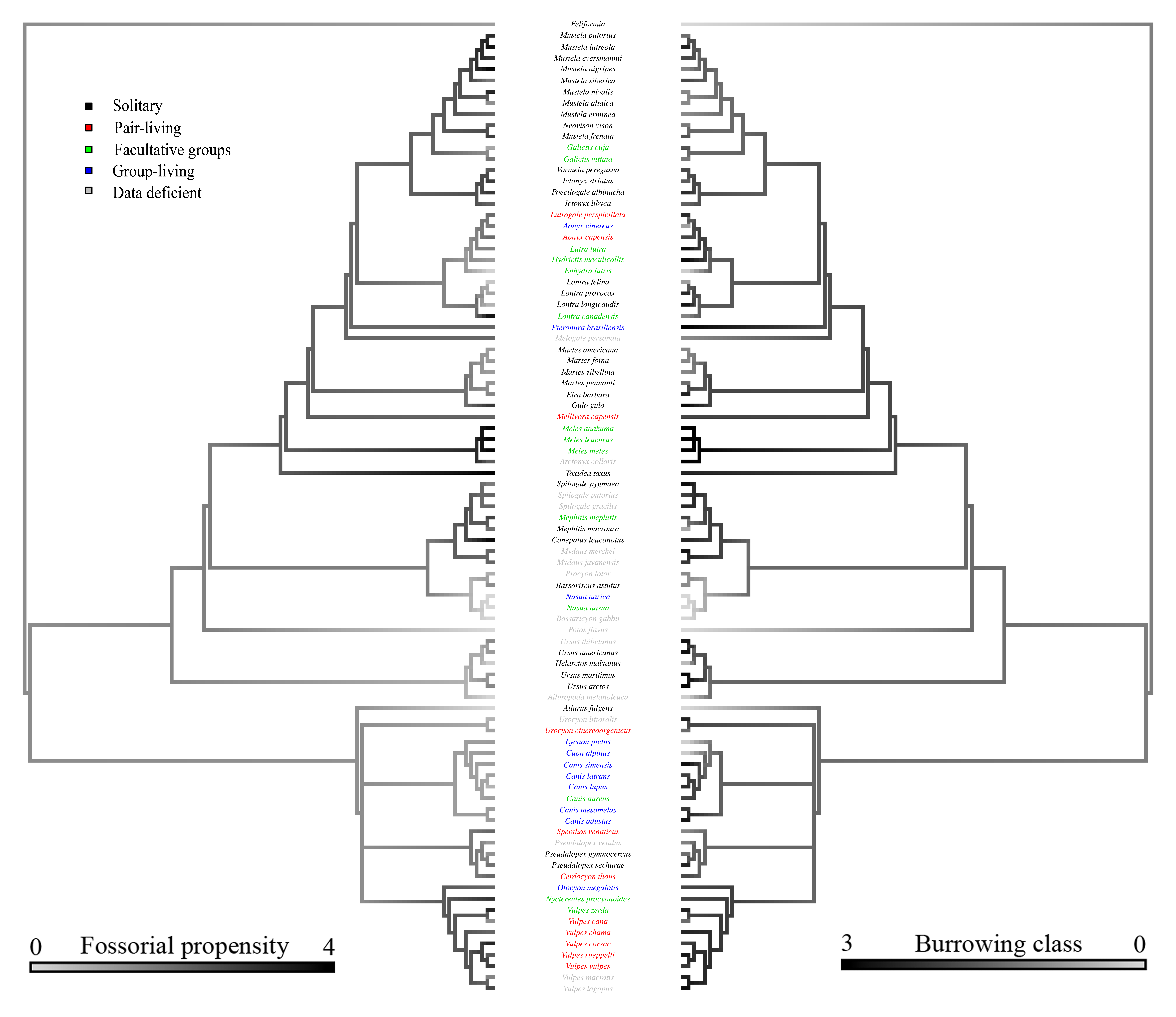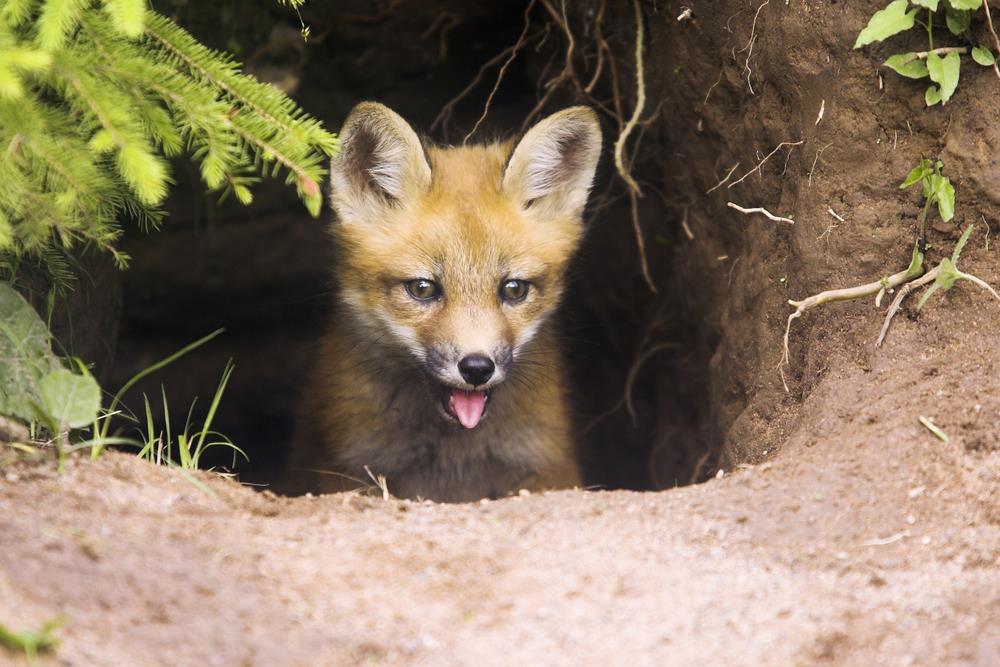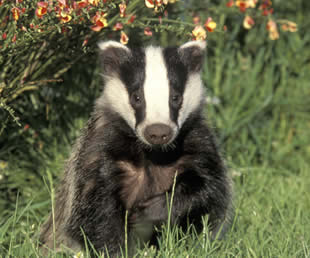News
David Macdonald explains how WildCRU research is revealing the rich social lives of carnivores
Everybody knows that many mammals, even some quite big ones, take sanctuary in underground burrows, and anybody whose childhood was enriched by the stories of Beatrix Potter can imagine Mr Badger and his family holding underground tea parties in their cosy den. But when it comes to evolutionary biologists trying to figure out exactly why some animals use burrows and others don’t, and what, if any, are the implications for their social lives, there was a yawning knowledge gap. That is, until WildCRU researcher Mike Noonan tackled the problem: Mike, supported by Chris Newman and our badger team, has been using cutting edge technology to reveal the intricacies of who sleeps with whom in underground badger setts, and that led us to explore the published literature for other mammals – our results are the topic of a recent WildCRU article published in the journal Frontiers in Ecology and Evolution.
Our starting point was the founding idiom of socio-ecology: that for group-living to persist, the benefits of living with others must outweigh the costs. For a number of carnivores, the benefits of group-living clearly come about through improved hunting efficiency, where packing power facilitates endurance hunting (e.g., grey wolves, Canis lupus), or strategic kills (e.g., lions, Panthera leo). For others the benefits result from sharing the burden of defending territories (e.g., many social canids), remaining vigilant against predators (e.g., meerkats, Suricatta suricatta, or dwarf mongooses, Helogale parvula), and/or the communal care of offspring (e.g., brown hyaenas, Hyaena brunnea, or banded mongooses, Mungos mungo). As Hans Kruuk, the real pioneer of Wytham’s badger studies, noticed in 1972 however, there are numerous group-living carnivores that do not hunt, or interact cooperatively. Understanding the costs and benefits that encourage group-living in these more nuanced societies has proven a challenging endeavor.
Early work here at the WildCRU observed that many non-cooperative societies are dictated by the abundance and dispersion of resources – its an idea I named the Resource Dispersion Hypothesis (RDH): that groups may develop where resources are dispersed in such a way that the smallest economically defensible territory can also sustain additional animals. Under these circumstances, secondary individuals can cohabit with the primary occupants at little or no cost. What Mike further noticed was that many tend also to have a substantial reliance on burrows.
From what is called a meta-analysis (combining the findings of lots of studies to draw new conclusions) Mike and our team found that three quarters of carnivore species use underground dens at some stage in their lives, though most commonly to rear young. Giving birth to a litter of well-developed young requires a lengthy pregnancy, during which the expectant mother would be in no state to hunt. To compensate, carnivores tend to have shorter pregnancies, but give birth to relatively undeveloped young. These newborns, known as altricial young (the opposite end of the continuum from precocious young), need to be protected from the elements and predators as they mature, so, not surprisingly, many of the Carnivora excavate dens to keep their young safe. In turn, as far as the numbers go, carnivores that use burrows to rear young are 2.5 times more likely to form groups than those that do not.
Motivated by this number, our analyses further revealed strong evolutionary ties between diet, burrow use and sociality. Of the 145 species examined, we found a substantial overlap between those carnivores that evoloved along more fossorial (burrow-dwelling) trajectories, and those with omnivorous/ insectivorous diets. Of these burrow dwelling omnivores, only 3 were solitary; white-tailed mongooses (Ichneumia albicauda); American hog-nosed skunks, (Conepatus leuconotus); and Sechuran foxes, (Pseudalopex sechurae). This link between burrow use and omnivorous/ insectivorous diets is striking. Although 75% of carnivores use underground burrows to rear young, as youngsters mature their increasing energetic demands become serious constraints. Those with carnivorous diets tend to disperse from their natal territory because vertebrate prey cannot easily support the requirements of multiple adults. For those carnivores with omnivorous/insectivorous diets however, food sources can often support multiple adults and dispersal can be delayed – sometimes even they never leave home!
If these omnivores/insectivores are also small enough to share den space as adults (for example no matter how rich the food source, a family of bears would struggle to squeeze into a structurally sound burrow!), dens act as foci. Even in the absence of any other benefits of sociality, the protective benefits of a burrow can encourage the next generation to stay at home, where this is especially true in regions prone to harsh weather. The continued use of natal dens into adulthood can impose communal aggregation upon family units. If the local environment can continue to support multiple generations, over time, these family groups can evolve into the complex societies seen across many of the Carnivora.
In short, underground burrows act as a safe haven for developing offspring. For species living in an environment where the pattern of resource dispersion allows youngsters to remain at home, as adults, in the den where they were born, then a propitious scene is set for the formation of permanent social groups.







